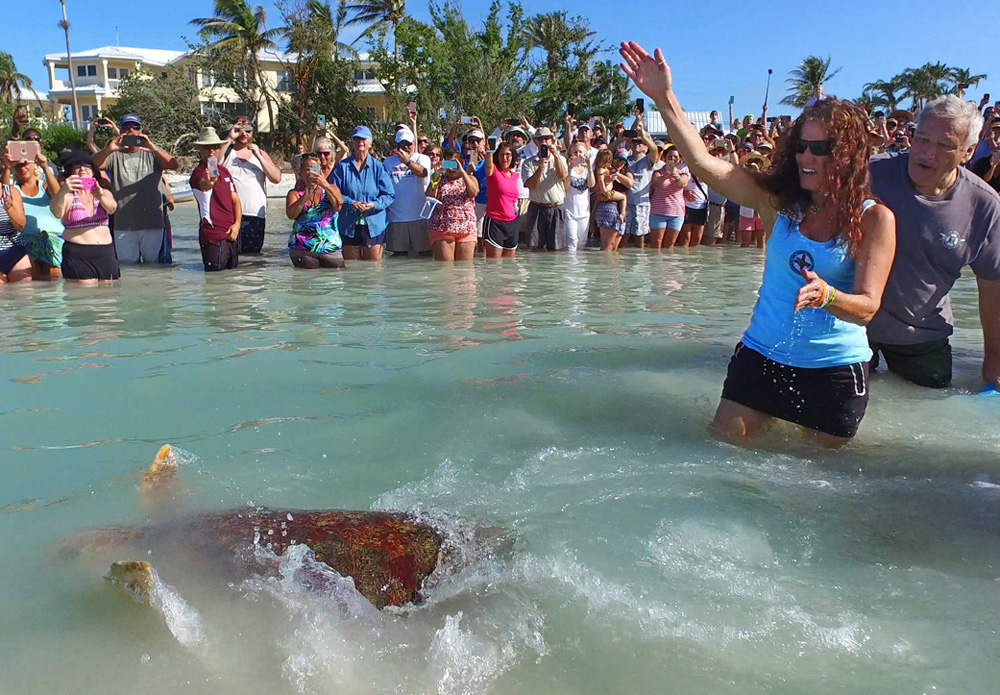Whether you’re intrigued by marine mammals, sea turtles, wild birds or the plants that add color and lushness to the Florida Keys landscape, you can indulge your interest at the island chain’s many environmental attractions.
Among them are the Florida Keys Wild Bird Rehabilitation Center, the Turtle Hospital, Florida Keys Aquarium Encounters and the Key West Tropical Forest & Botanical Garden. Learn more about the four don’t-miss attractions here, and plan to explore them in person during your next escape to the Keys.

The Florida Keys Wild Bird Rehabilitation Center is a haven for avian life — and a must-visit spot for travelers to the Keys.
Florida Keys Wild Bird Rehabilitation Center. Located at mile marker (MM) 93.6 in the Upper Keys, the facility is both an avian hospital and a sanctuary — a humane, natural and protected refuge with acres of wetlands that shelter injured birds that can’t safely return to the wild. All the wild birds living in the aviary have permanent injuries or disabilities that prohibit their release.
Stroll the sanctuary’s boardwalk and view these beautiful creatures, read each inhabitant’s story, and expand your knowledge about wild birds and their protection. You can even help support this very worthwhile place through volunteer opportunities and adopt-a-bird programs.
The Turtle Hospital. Meet rescued sea turtles during behind-the-scenes tours of the planet’s first state-licensed veterinary hospital specializing in the fascinating creatures, located at MM 48.5 in Marathon. A dedicated team at the Turtle Hospital rescues, rehabilitates and nurtures sick and injured turtles and, whenever possible, releases them back into their ocean home.
Since it opened more than 30 years ago, the hospital has treated and rehabilitated nearly 2,000 injured sea turtles and assisted scores of hatchlings gone astray after leaving their nests. Occasionally it’s possible to witness the release of a rehabilitated turtle — a truly heartwarming experience.
Florida Keys Aquarium Encounters. Marathon’s Florida Keys Aquarium Encounters, at MM 53, spotlights marine conservation and the underwater habitats of the Keys. It’s a great place to enjoy an immersive experience with reef fish, invertebrates, stingrays and even sharks — without entering the ocean. You can also feed reef fish, which isn’t allowed when you’re snorkeling or diving in the Florida Keys National Marine Sanctuary because it disrupts the animals’ natural behavior.
 Aquarium Encounters’ signature feature is a coral reef exhibit and shark habitat housed in a gigantic 200,000-gallon interconnected saltwater aquarium. Even if you don’t have prior scuba experience, it’s possible to enjoy the in-water opportunity with supervision from professional dive instructors. Plus you can view exhibits; snorkel in a shallow protected lagoon; explore touch tanks with starfish, conchs and horseshoe crabs; or feed debarbed stingrays and mellow baby nurse sharks.
Aquarium Encounters’ signature feature is a coral reef exhibit and shark habitat housed in a gigantic 200,000-gallon interconnected saltwater aquarium. Even if you don’t have prior scuba experience, it’s possible to enjoy the in-water opportunity with supervision from professional dive instructors. Plus you can view exhibits; snorkel in a shallow protected lagoon; explore touch tanks with starfish, conchs and horseshoe crabs; or feed debarbed stingrays and mellow baby nurse sharks.
Key West Tropical Forest & Botanical Garden. Known as the only frost-free botanical garden in the continental United States, this haven for nature lovers showcases trees and plants native to the Florida Keys, Cuba and the Caribbean. Situated at 5210 College Road, just across Cow Key Channel from Key West, the 15-acre garden is also a paradise for bird watchers.
Sometimes described as a living museum, it features two wetland habitats, a 1-acre butterfly habitat, a native plant nursery, a waterfall wall of tropical plants and two of the last remaining natural freshwater ponds in the Florida Keys. Exploration is encouraged via eight self-guided tours.
These are just a few of the countless spots where you can discover the Florida Keys’ natural beauty, unique ecosystems and living things. Add meaning and memories to your next Keys vacation by experiencing one or more of them — and forging a personal connection with the environmental wonders you encounter.

